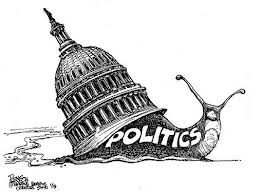The Civil Rights Movement consists of many individuals whom fought and sacrificed in the struggle for freedom. Some of our heroes are well known like Malcolm X, WEB Du Bois and Martin Luther King. Today we focus on a lesser known freedom fighter by the name of Bayard Rustin. Although not as famous, Rustin is one of the most interesting and influential in the history of the movement.
Born in West Chester, PA in 1912, he was raised by his grandparents Janifer and Julia Rustin. Julia’s Quaker beliefs and her political involvement were early influences on a young Bayard. She was a member of the NAACP which allowed her grandson to come in contact with men like WEB Du Bois and James Weldon Johnson. He carried on her pacifist beliefs with him throughout his life. As a young man he was active in campaigning in Jim Crow laws in West Chester.
In 1932 he enrolled in Wilberforce University. Rustin left Wilberforce in 1936 without taking his final exams. It has been said that Rustin was kicked out because he staged several protest over the quality of food served at the school. From there he headed to New York City. While there in 1936 he joined the Young Communist Party. Receiving orders from the Soviet Union the party was active in the civil rights movement. Rustin was also known as a pretty good vocalist. He was even apart a short lived Broadway show that featured him, Josh White and the legendary Paul Robeson.
During the World War II era in 1941 Bayard switched affiliations and joined the Socialist Party. There he got to meet other legendary labor leader Asa Phillip Randolph, head of the Brotherhood of Sleeping Car Porters. Along with fellow pacifist lead A.J. Muste the leader of Fellowship of Reconciliation (FOR) they planned a march on Washington due to the racial segregation in the military. The march was later canceled after Randolph met with President Roosevelt at the White House. Then Executive Order 8802 of the Fair Employment act which banned discrimination in the military and federal organizations. Rustin also helped Japanese citizens who were locked in internment camps during the war protect their property.
Throughout the 1940s Rustin was an active force in the civil rights struggle. In 1942 he along with James Farmer and George Houser founded the Congress on Racial Equality (CORE). The group was influenced by Ghandi and his nonviolent disobedience movement in India. Being a pacifist Rustin was charged with violating the Selective Service Act for refusing to be drafted into the military during World War II. He and other members of CORE were convicted and served time in Lewisburg Federal Prison for their not entering the military. While in prison Bayard protested segregation in the dining halls.

After being released Rustin hit the ground running. He along with the other members of CORE began challenging segregated transportation in the south. Almost 20 years before Freedom Summer, Rustin organized 8 blacks and 8 whites to ride through segregated states. They were arrested multiple times throughout the region to highlight the issue and challenge these states violations of federal law. In 1948 the Council Against Intolerance in America awarded Rustin and George Houser their Thomas Jefferson Award for the Advancement of Democracy for their efforts.
In 1955 Rustin was called to Montgomery, AL to help with the bus boycott after the arrest of Rosa Parks. This is where he first encountered a young Martin Luther King. Bayard became advisor and colleague of Dr. King. He helped him start the Southern Christian Leadership Council (SCLC). He is even believed to have schooled Dr. King on the true meaning of Non-violent resistance. Prior to meeting Rustin a the young preacher had armed security and kept a gun in his home.
In 1963 Rustin got the biggest job of his career but also brought him the most heat. He was tapped to plan the March on Washington. Many black leaders opposed the idea of Rustin planning such a task because they thought his past could be exploited. Due to his communist ties, multiple arrest and the fact that he was a homosexual was a liability. Roy Wilkins the head of the NAACP thought that southern politicians would use this against him compromise the entire event. J. Edgar Hoover who was head of the FBI at the time, whom just so happened to have been following Rustin for years decided to share his file with those very politicians.
On August 28th, 1963 the March was held and become the most famous event of the civil rights movement. The crowd was estimated to be between 250,000 – 400,000 people. The march was for Jobs and Freedom and had a lot of support from labor unions. There were many speakers that included, Roy Wilkins (NAACP), John Lewis (SNCC) and of course Dr. Martin Luther King, who delivered his famous “I Have a Dream” speech. After the event Rustin had a lower profile but was still a trusted advisor of King.
Bayard was seen as an asset to the trade union movement and headed the AFL-CIO’s new civil rights initiative. In 1965 he was the head of the Phillip Randolph Institute which was named after his close friend. He held that post until 1979. Rustin was also very active in Vietnam War protest and the beginning of the gay rights movement. He is quoted in saying that “The barometer of where one is on human rights questions is no longer the black community, it’s the gay community. Because it is the community which is most easily mistreated.” That quote was from 1986, Rustin passed away on August 24th of 1987.





